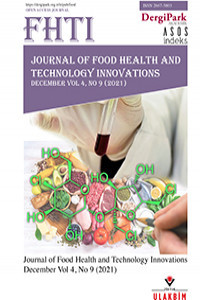Food and Beverage Methylxanthines, Glycoalkaloids, Pyrolizidines and Phenolic Alkaloids: Processing Effects
Food and Beverage Methylxanthines, Glycoalkaloids, Pyrolizidines and Phenolic Alkaloids: Processing Effects
Food and beverage alkaloids can be take part in food chemistry, food industrial applications, food supplement and medical drug fortifier. Alkaloids are aminoacid derivatives that have a bitter taste and are found as secondary metabolites in potato plants as potatoes glycoalkaloids and in tomato plants as tomatine glycoalkaloids. Piperidine alkaloids from black peppers with pyridine structured alkaloids. Caffeine, theobromine and theophylline in most consumed non-alcoholic beverages such as coffee, tea, cocoa majorly and chocolate and herbal teas as less are classified as methylxanthine alkaloids. Caffeine is found in varying quantities in the beans, leaves, and fruit of some other plants including kola nuts, yerba mate, guarana berries etc where it acts as a natural pesticide that paralyzes and kills certain insects feeding on the plants. Caffeine content depends on strength of the brew, growing conditions, processing techniques and other variables. A specific alkaloids in foods and beverages can alter after food processing containing cooking, boiling, steaming, frying, brewing etc. as conventional food processing,. Also food and beverage alkoids can be altered by novel food processing like gamma irradiation and microwave processing. In this point; toxicity, carcinogenic, toxigenic structure and anticancer /cancer formation should be dealed.
Keywords:
Alkaloids, Methylxanthines, Glycoalkaloids, Pyrolizidines Food,
___
- FAO.1992. Food and Agriculture Organization / World Health Organization, Joint Expert Committee on Food Additives, 1992
- ISSN: 2667-5803
- Başlangıç: 2018
- Yayıncı: Dokuz Eylül Teknoloji Geliştirme Anonim Şirketi
